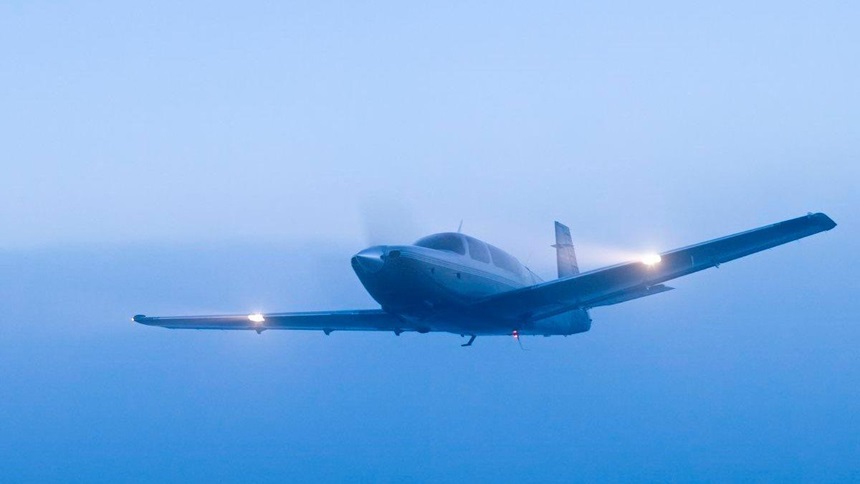Using PIREPs
Safety Spotlight: Sky Spotter

Let’s look at how to use PIREPs to your advantage and ensure they’re pertinent to your flight.
Verify Forecast

You’re planning to fly to Carlsbad, CA (KCRQ), arriving at 1800 Zulu.
Forecast: The terminal aerodrome forecast (TAF) calls for weather at the McClellan-Palomar airport to be overcast at 1,400 agl but improving later in the evening.
Reports: At 1610 Zulu, a pilot reported broken clouds at 3,900 msl—an indication that the weather has actually improved faster than expected. You can verify this improvement by checking ground-based weather reports from airports along the route of flight.
Conclusion: Now that you’ve verified the actual weather is better than the forecast, you can make a trip you would have otherwise canceled! PIREPs can help you determine if forecast conditions are developing as scheduled (or at all).
Fill in Gaps

PIREPs also “fill in the gaps” between ground-based weather reporting stations, providing more accurate information for preflight planning and in-flight decisions.
For example, a PIREP from this area, which does not have en route airports with weather reporting, would help provide a more complete picture of the actual weather conditions for a flight between the two airports on this chart.
Route PIREPs
We often think of PIREPs as reporting the conditions at a point in space. But you can also file a Route PIREP to describe the conditions between two or more points and look for route reports when searching PIREPs. Consider these PIREP examples.
PIREP A:
 HHR UA/OV HRR320010/TM 2105/FL045/TP C185/SK OVC055/TB OCNL LGT/WX FV20+
HHR UA/OV HRR320010/TM 2105/FL045/TP C185/SK OVC055/TB OCNL LGT/WX FV20+
This report only describes the conditions 10 miles north west of the Healy River Airport (HRR). It conveys no additional information to reveal if the pilot just flew through the mountain pass to the south, just took off from HRR, headed north—or is headed south toward the mountains.
PIREP B:
 On this cross-country flight from southcentral Alaska through Windy Pass headed to Fairbanks, a pilot filed the following report:
On this cross-country flight from southcentral Alaska through Windy Pass headed to Fairbanks, a pilot filed the following report:
HHR UA/OV HRR320010-TTW/TM 2105/FL045/TP C185/SK OVC055/TB OCNL LGT/WX FV20+
Filed as a route report, it tells other pilots (as well as weather forecasters and flight service), that these conditions are constant through Windy Pass, a major mountain pass in the Alaska Range, where conditions are often different on opposite sides of the mountains.
PIREP C:
 Changing conditions may also be captured in a route report, as in this situation on a flight departing Anchorage to the southwest.
Changing conditions may also be captured in a route report, as in this situation on a flight departing Anchorage to the southwest.
ENA UA/OV ANC-ENA360010/TM 2318/FL035/TP PA31/WX FV99SM/TB LGT-MOD 005-035/RM/SK OVER ANC OVC020 CEILING RISING AS PILOT FLYS SOUTHWEST=
In this instance, the departing Navajo conveyed that the ceiling was rising as it flew southwest, while turbulence continued to range from light to moderate during the climb.
Route reports may be filed with two or more locations, using references to navaids and airports, or points in space defined by distance and heading, or even a latitude/longitude location. Consider using them when flying cross-country to add a dimension to your reports, when appropriate.
Quick Checks
Not all PIREPs you receive will apply to your flight. When reviewing PIREPs, be sure to check:
- Location
- Is the PIREP near or along the planned route of flight?
- Time
- Note the PIREP time. It is your job to decide if the PIREP is timely.
- Altitude
- Is the PIREP at or near the planned altitude? The weather at FL300 will probably be different from 2,500 feet msl.
- Aircraft Type
- Is the reporting aircraft type similar? Light turbulence to a B-767 could be severe turbulence to a small aircraft.
Not all PIREPs you receive will apply to your flight.
Weather Wise: Awareness Aloft
In-flight weather monitoring is a critical component of good decision making. In this video, we look at how to maintain strong situational awareness with respect to weather and using that awareness to make good decisions should things not go as planned.